Tags
As I mentioned in my latest Film 101 post, screwball comedies are known for their fast-paced dialogue, strong women, and farcical situations revolving around courtship and marriage. They often have an undercurrent of class conflict, especially when it comes to relationships. Some of the films called out as early screwballs have some, but not all, of these qualities. And, unlike later comedies, these films didn’t fall under the infamous Production Code, which began to be enforced in July 1934.
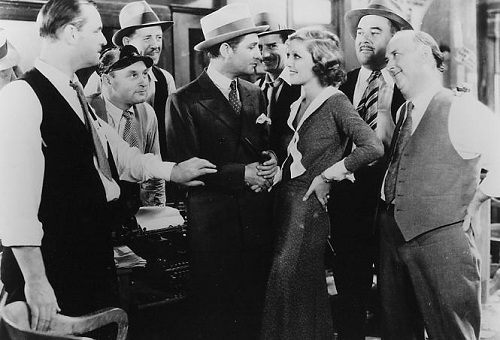
Stew Smith (Robert Williams) and Gallagher (Loretta Young) are “buddies” in the newsroom in Platinum Blonde.
Before the Code: Proto-Screwballs
One example is The Front Page (1931), produced by Howard Hughes and directed by Lewis Milestone, with Adolphe Menjou and Pat O’Brien. For me, this film suffered incredibly in comparison to His Girl Friday (1940), not to mention the poor transfer I watched on Netflix, and so it is hard to judge it fairly on its own merits. Something similar happened to me when I first watched The Philadelphia Story (1940) long after seeing (and loving) High Society (1956): With a plot and dialogue so closely related to the original, it is hard to appreciate the wit and delivery of the older film when viewed in light of the remake. In any case, because the focus is on the two newspapermen instead of the couple, it just doesn’t have the same screwball vibe, although it is extremely funny and does feature Edward Everett Horton, who will pop up quite a bit in these comedies.
Two Jean Harlow films of this period are also often grouped with screwball comedies. The first is Platinum Blonde (1931), directed by Frank Capra. Like The Front Page, this story revolves around journalists, with Loretta Young and Robert Williams as co-workers with potential until Williams gets pulled away into the socialite world of Jean Harlow. I must say that, although I was sad to realize how young she died (of renal failure), I don’t find Harlow a very compelling actress, nor do I get her physical appeal, as she seems to be far older than her years, even given the fashions of the day. Therefore, it wasn’t surprising to me to learn that the original title of this film was Gallagher, after the Loretta Young character, since one is clearly meant to be rooting for her in the end. I really loved Robert Williams in his first leading role—his late-night conversation with the butler about puttering is a thing of genius—and was sad to learn that he died of peritonitis just three days after the film’s premiere. You know, I always thought it was odd that one of my uncles died of some random thing no one dies of today, but now I realize that, if Hollywood stars weren’t getting proper treatment, what chance did he have?
The second Harlow picture, Bombshell (1933), directed by Victor Fleming, is harder to categorize as a screwball; it just doesn’t have the wit I associate with this genre. That’s not to say I didn’t enjoy the film, but it’s far too tough and serious to really qualify. The plot is supposedly based on the life of Clara Bow and recounts how “Lola Burns” tries to live a normal life as a Hollywood movie star despite the hangers-on about her. However, it’s never quite clear to me what, or who, Lola wants. And the male lead is so utterly awful as a character, totally abusing her trust when she doesn’t even realize it, one can’t root for him either.
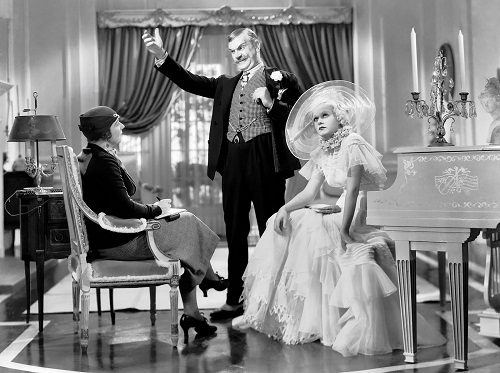
Lola Burns (Jean Harlow) is understandably weary of her father (Frank Morgan, aka The Wizard of Oz) in Bombshell.
I definitely saw more of Jean Harlow’s appeal here, although I think that for this genre she has too much obvious sex appeal in comparison to Irene Dunne, Carole Lombard, and Myrna Loy. Speaking of sex appeal, this film is startlingly blatant compared to later screwballs, with such pre-code exchanges as this one between Lola and her maid, Loretta, played by the incredible Louise Beavers (whom you may recognize from Mr. Blandings Builds His Dream House):
—I know, Miss Lola, but the negligee you gave me got all tore up night before last.
—Your day off is sure brutal on your lingerie.
Closer to my idea of the perfect screwball are two early films by Ernst Lubitsch, Trouble in Paradise (1932) and Design for Living (1933). Clearly pre-code in subject and dialogue (they actually use the word sex!), Trouble in Paradise tells the story of a couple of unrepentant thieves, played by Miriam Hopkins and Herbert Marshall (last seen in Alfred Hitchcock’s Murder!), while Design for Living revolves around a bohemian ménage à trois consisting of Hopkins along with Fredric March and Gary Cooper. After the Production Code began to be vigorously enforced in 1934, neither film was approved for re-release and both were withdrawn from circulation and not seen again for decades.
Lucky for me, both films are now available as part of the Criterion Collection, as these witty and sophisticated comedies are some of the best I’ve seen. They remind me of Oscar Wilde’s plays, with about as many quotable lines:
It must be the most marvelous supper. We may not eat it, but it must be marvelous.
—Herbert Marshall as Gaston Monescu in Trouble in Paradise
It’s true we have a gentleman’s agreement, but I am no gentleman.
—Miriam Hopkins as Gilda Farrell in Design for Living
It is hard for me to decide which one of these I liked more. Despite my love of a good caper, and Herbert Marshall, I probably have to give the edge to the Paris-based Design for Living. It is a bit more zany than the coolly perfect society portrayed in Trouble in Paradise and you really see the hand of The Front Page co-author Ben Hecht, who would go on to pen one of the great screwballs of 1934, Twentieth Century. Thankfully, the omnipresent Edward Everett Horton appears in both, so I don’t have to choose there.
1934: A Screwball is Born
1934 would mark a turning point in the history of the romantic comedy, with three incredible films appearing in the first half of the year, followed closely by the establishment of the Production Code Administration in the summer, which would guide Hollywood film production for the next thirty years.
The first of these films was It Happened One Night, directed by Frank Capra and starring Clark Gable and Claudette Colbert, which would go on to be the first film to win the “Big Five” (Best Picture, Actor, Actress, Director, and Writing) at the Oscars. This is one I own on DVD as it is a longtime favorite. I think one thing that makes it so successful is that, despite the crazy framing (an heiress jumps overboard from her father’s yacht in Florida to run away by bus and join her new husband in New York), it is actually a very realistic story with realistic incidents that propel the plot forward—a bag getting stolen, being hit on by an annoying guy on the bus, etc. Gable is just cocky enough as the brash reporter looking for a scoop and Colbert is spoiled and naïve, but not completely overbearing or annoying.
Twentieth Century, directed by Howard Hawks and starring Carole Lombard and John Barrymore, came out in May and didn’t perform so well at the box office. It’s easy to see why. Although it launched Lombard’s career as a comedienne, neither she nor Barrymore play particularly sympathetic characters. I find him funny as he hams it up as a theater impresario, and Lombard is ridiculously overdramatic as his protégé gone rogue, but it doesn’t really hold up to repeat viewings since the constant overacting is rather wearying. Once they actually get on the “Twentieth Century Limited” train, things improve immensely, but the film spends far too much time on the initial Broadway set up to really work completely (although fans of the theater should certainly check it out).
Lastly, there is The Thin Man, based on the detective novel by Dashiell Hammett, author of The Maltese Falcon, and starring William Powell and Myrna Loy. The Thin Man is one of the three movies my sister and I will stop everything to watch and can quote from beginning to end—the other two being the aforementioned High Society and (inexplicably) Shag: The Movie (1989). Powell and Loy are just delicious here and add a completely other layer to Hammett’s novel. It’s no wonder they went on to make five sequels as well as six other movies together; their chemistry is phenomenal. While not a romantic comedy, its spirit certainly places it firmly in the screwball category. Plus, their cocktail consumption makes mine look utterly tame by comparison.
—Say, aren’t you hot in that?
—Yes, I’m stifling. But it’s so pretty.
The Lubitsch Touch
I never quite understood the phrase “The Lubitsch Touch” until I began reviewing these comedies as a group. While I had seen Ninotchka (1939), The Shop Around the Corner (1940), and To Be or Not to Be (1942) previously, it was seeing his earlier, more “screwball” films, and comparing them to other similar pictures, that led me to a much greater appreciation of his work.
I enjoy the slapstick and crazy situations of movies like The Thin Man, but Lubitsch’s work definitely rises above, both in tone and visual style. He is thoughtful and creative, never resorting to clichés, and yet his movies possess a certain effortlessness that makes his direction absolutely seamless. It tells you something when the great Billy Wilder supposedly had a sign over his office door that read “How would Lubitsch do it?”
Even when working with a less successful script, such as Bluebeard’s Eighth Wife (1938), he is able to create something enjoyable and relatable. Little details, like how he introduces settings, speak volumes. For example, in Bluebeard, he uses a French Riviera department store sign in various languages, with “English spoken” and then “American understood” at the bottom, before moving in on Gary Cooper inside the store.
—I met him once.
—Who is he?
—All I know is he only sleeps in the tops of his pajamas.
—Oh, I see.
—Claudette Colbert and David Niven in Bluebeard’s Eighth Wife
Bluebeard aside, I wouldn’t place most of Lubitsch’s later films under the banner of screwball comedy. Ninotchka (1939) is really a romance with satire and social commentary on the side, and, despite the premise of the plot (two people fall in love via correspondence not realizing they work together), The Shop Around the Corner is also more sentimental than screwball, much like its remake You’ve Got Mail. Sadly, That Uncertain Feeling (1941) never arrived from Netflix so I didn’t get to see it,* and To Be or Not to Be (1942) is more straight-up comedy than anything, despite the presence of screwball heroine Lombard. That said, I can’t recommend this last film enough, especially if you are a Mel Brooks fan; it explains so much. Plus, in the seemingly endless series of actors lost tragically young, this was Lombard’s final film—she died in a plane crash at age 33 returning home from a war bond rally while To Be or Not to Be was in post-production.
—It’s becoming ridiculous the way you grab attention. If I tell a joke, you finish it. If I go on a diet, you lose the weight. If I have a cold, you cough. And if we should ever have a baby, I’m not so sure I’d be the mother.
—I’m satisfied to be the father.
—Carole Lombard and Jack Benny in To Be or Not to Be
Essentially, I don’t think you can go wrong with any of these films, especially if you enjoy snappy dialogue. You certainly won’t waste much time watching them as most clock in at (or around) the comedy ideal of 90 minutes.
Have you seen any of these films? If so, which would you recommend and why?
Screwball Filmography: Part I
The Front Page (1931)
Platinum Blonde (1931)
Trouble in Paradise (1932)
Bombshell (1933)
Design for Living (1933)
It Happened One Night (1934)
Twentieth Century (1934)
The Thin Man (1934)
Bluebeard’s Eighth Wife (1938)
Ninotchka (1939)
The Shop Around the Corner (1940)
To Be or Not to Be (1942)
For the next post in this Screwball series, see 1930s Screwball Classics and Forgotten Films.
* Between Trouble in Paradise and Design for Living, Lubitsch also directed a segment for the film If I Had a Million (1932), which I was eager to see, but it turned out to be just over two minutes, so, unless it is on the disc you are watching as an extra, I wouldn’t seek it out.

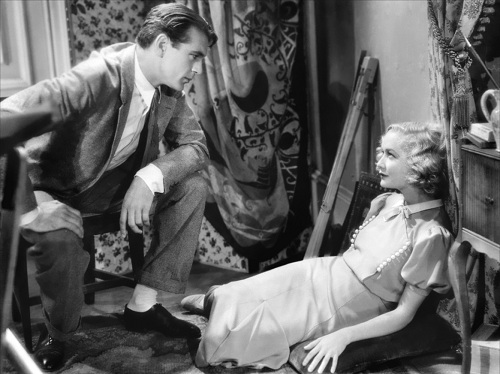
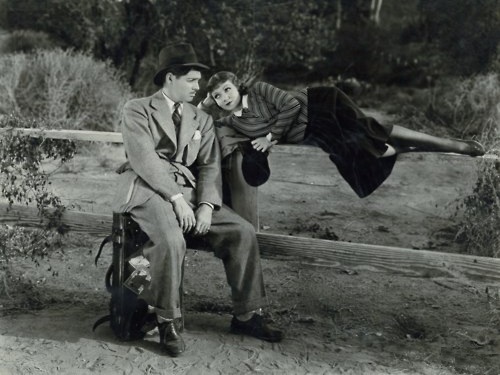
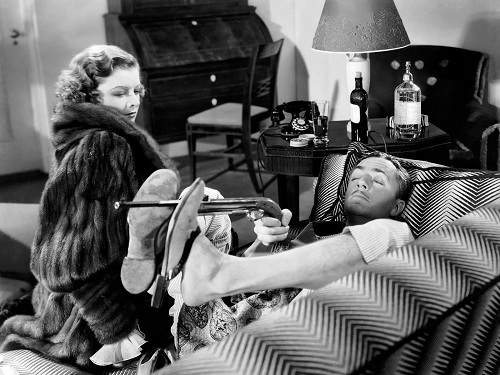
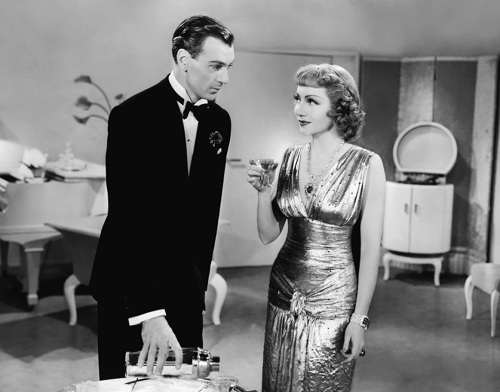
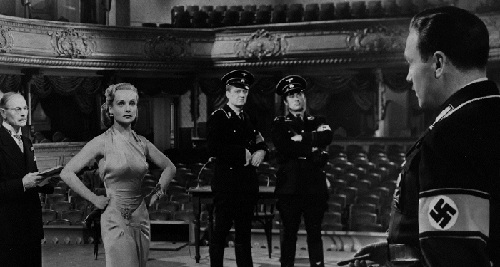
I’d never seen Robert Williams before. Has a bit of the Spencer Tracey vibe to him, but is more handsome.
I need to check out Trouble in Paradise and Design for Living, and they’re only a click away on the Hulu.
Have you seen Lombard in Nothing Sacred with Frederick March? One of her best performances and a great Ben Hecht script.
Here’s an interesting bit on a Lombard retro:
http://www.villagevoice.com/2008-11-19/film/film-forum-celebrates-carole-lombard/
Hah! See my next post for that assessment. It just didn’t work for me. And I usually love Lombard.